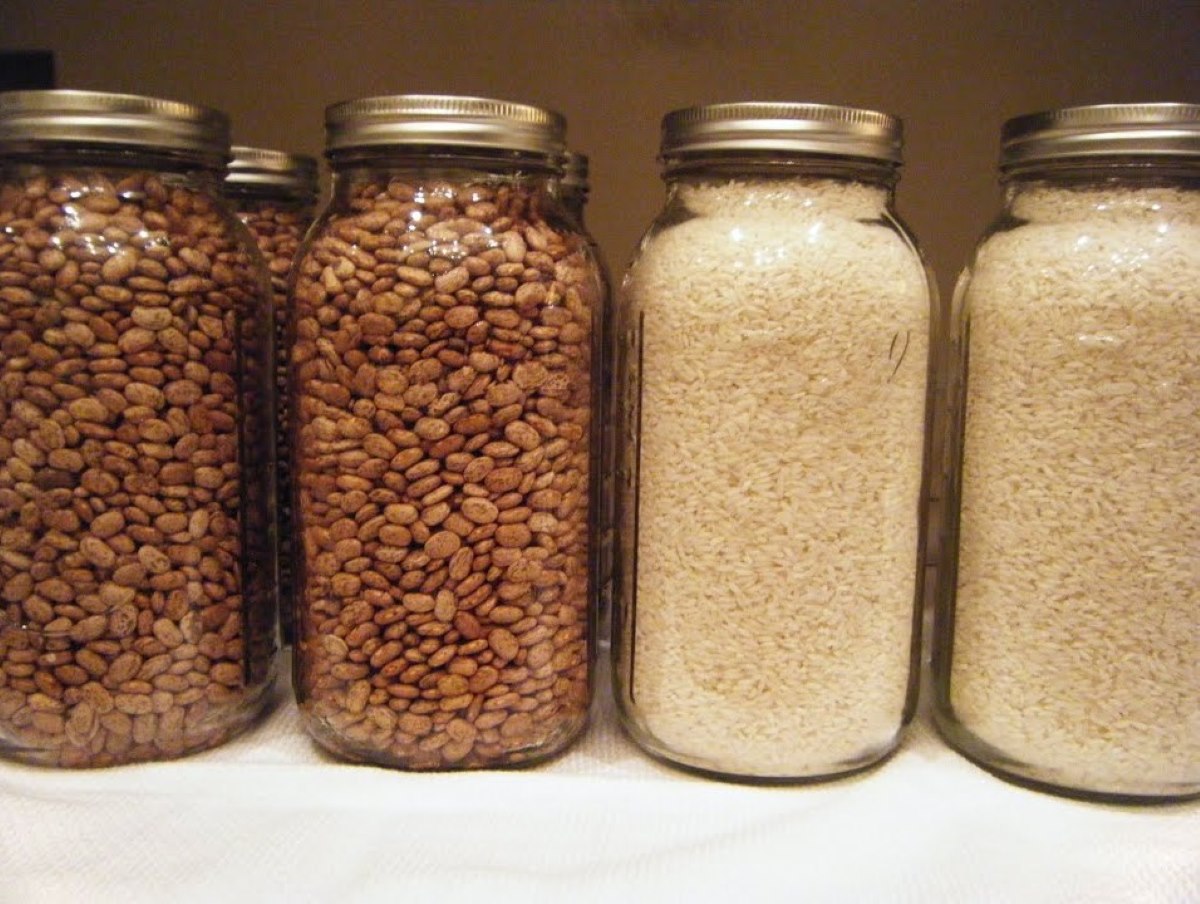

Articles
How To Store Dried Beans And Rice Long Term
Modified: August 17, 2024
Learn the best methods for storing dried beans and rice long term. Find helpful tips and techniques in this informative articles.
(Many of the links in this article redirect to a specific reviewed product. Your purchase of these products through affiliate links helps to generate commission for Storables.com, at no extra cost. Learn more)
Introduction
Dried beans and rice are essential staples in many households. They are not only versatile and nutritious but also have a long shelf life, making them excellent options for long-term storage. Whether you are stocking up for emergencies, budgeting, or simply wanting to have a backup of these pantry staples, proper storage is crucial to maintain their quality and freshness.
Understanding how to store dried beans and rice long-term will ensure that you have a readily available and reliable food source in your pantry. But before diving into the storage techniques, it’s important to have a basic understanding of the shelf life of dried beans and rice.
Dried beans, including varieties such as kidney beans, black beans, and chickpeas, can last for several years when stored properly. On the other hand, rice, especially white rice, can also have a long shelf life of up to five years or more.
However, it’s essential to note that the shelf life can vary depending on various factors, such as the storage conditions, packaging, and the type of beans or rice. Factors like temperature, humidity, and exposure to light can affect the longevity and overall quality of these pantry staples.
In this article, we will guide you through the process of storing dried beans and rice long-term. We will discuss the factors you need to consider before storage, the best containers to use, and the various storage methods suitable for different situations. By following these guidelines, you can ensure that your dried beans and rice will remain fresh, flavorful, and nutritious for an extended period.
Key Takeaways:
- Properly storing dried beans and rice long-term involves choosing the right containers, preparing the grains, and maintaining a cool, dry storage environment to preserve their quality, flavor, and nutritional value for an extended period.
- Effective rotation, meal planning, and sharing with others are essential practices for maximizing the use of stored dried beans and rice, ensuring minimal waste and promoting community support during times of need.
Read more: How To Store Dry Milk Long Term
Understanding the Shelf Life of Dried Beans and Rice
To properly store dried beans and rice long-term, it’s essential to have a clear understanding of their shelf life. While both dried beans and rice have impressive longevity, it’s important to know their specific characteristics and how they can be affected by storage conditions.
Dried beans, such as kidney beans, black beans, pinto beans, and chickpeas, have a significantly longer shelf life compared to cooked or canned beans. When stored properly, they can last for several years without losing their nutritional value or taste. However, it’s important to note that different types of beans have different storage requirements. Some beans, like black-eyed peas or lentils, may have a slightly shorter shelf life compared to others.
On the other hand, rice is a staple food in many cultures and can be stored for an extended period. White rice, particularly long-grain varieties, has a longer shelf life compared to brown or wild rice, thanks to its lower oil content. While white rice can be stored for up to five years or more, brown rice and wild rice have a shorter shelf life due to their higher oil content, typically lasting around 6-12 months.
It’s essential to understand that the shelf life of dried beans and rice can be influenced by several factors:
- Packaging: The type of packaging used for dried beans and rice can greatly affect their shelf life. Beans and rice are usually sold in bags or boxes, but these original packages may not be suitable for long-term storage. It’s recommended to transfer them to airtight containers or use alternative packaging methods.
- Storage Conditions: Temperature, humidity, and exposure to light are critical factors that can impact the shelf life of dried beans and rice. It’s important to store them in cool, dry places away from direct sunlight, as heat and moisture can lead to spoilage or the growth of mold and insects.
- Quality of Beans and Rice: The quality of the dried beans and rice you purchase can also affect their shelf life. It’s crucial to buy beans and rice from reputable sources to ensure that they are fresh and free from contaminants.
By understanding these factors, you can take the necessary steps to ensure the longevity and quality of your dried beans and rice during long-term storage. In the next sections, we will explore the crucial factors you need to consider before storage and guide you through the process of choosing the right containers and storage methods.
Factors to Consider Before Storage
Before you begin the process of storing dried beans and rice long-term, there are several important factors to consider. Taking the time to address these factors will help ensure the longevity and quality of your stored pantry staples.
Type of Dried Beans and Rice: Different types of beans and rice have varying storage requirements. Consider the specific variety you have on hand and research its recommended storage conditions. Some varieties may require slightly different storage temperatures or humidity levels for optimal preservation.
Quality of Dried Beans and Rice: The quality of the dried beans and rice you intend to store plays a significant role in their longevity. Inspect the beans and rice for any signs of damage, mold, or insect infestation before storage. Discard any damaged or spoiled grains and ensure that you only store high-quality beans and rice.
Packaging: The original packaging of dried beans and rice is often not suitable for long-term storage. The bags or boxes they come in may not be airtight, leaving them vulnerable to moisture, pests, and air exposure. Transfer the beans and rice to proper storage containers that are airtight and can effectively protect them from external elements.
Storage Conditions: The storage conditions greatly impact the shelf life of dried beans and rice. Ideally, they should be stored in a cool, dry place away from direct sunlight and extremes of temperature. High temperatures and humidity can accelerate the deterioration of the beans and rice, leading to loss of flavor, nutritional value, and quality.
Container Choice: Choosing the right containers for storing dried beans and rice is crucial. Opt for containers that are airtight, BPA-free, and made of food-grade materials. These containers should effectively seal out moisture, insects, and air to maintain the freshness and integrity of the beans and rice.
Labeling and Date: Properly labeling the containers with the contents and date of storage is essential for maintaining order and tracking the age of the stored beans and rice. Use waterproof labels or markers to ensure that the labels do not smudge or fade over time.
Storage Space: Consider the available space you have for storing your beans and rice. Ensure that the storage area is well-organized, clean, and free from any potential contaminants. This will facilitate easy access, rotation, and monitoring of your stored pantry staples.
By taking these factors into account, you can better prepare yourself for the process of storing dried beans and rice long-term. In the following sections, we will delve into the specifics of choosing the right containers and the various storage methods suitable for different situations.
Choosing the Right Containers
When it comes to storing dried beans and rice long-term, selecting the right containers is crucial. The containers you choose should effectively protect the beans and rice from moisture, pests, and air exposure, ensuring their freshness and quality over an extended period. Here are some options to consider:
Airtight Plastic Containers: Airtight plastic containers are a popular choice for storing dried beans and rice. Look for containers that are BPA-free and made of food-grade materials. These containers offer a tight seal, which helps keep moisture and pests out. Additionally, transparent containers allow you to easily see the contents and monitor their condition without having to open them.
Mylar Bags: Mylar bags are an excellent option for long-term storage of dried beans and rice. These bags are made of a durable and puncture-resistant material that provides a barrier against light, moisture, and oxygen. They are often used in combination with oxygen absorbers to create an oxygen-free environment, further preserving the quality of the beans and rice. Mylar bags are available in various sizes, making them adaptable to different storage needs.
Mason Jars: Mason jars are a classic choice for storing pantry staples like dried beans and rice. These glass jars with screw-top lids offer an airtight seal, keeping out moisture and pests. Glass is a non-reactive material, ensuring that the flavors and quality of the beans and rice remain intact. Additionally, the transparent nature of the jars allows you to easily see the contents and assess their condition. Keep in mind that mason jars are best suited for smaller quantities of beans and rice due to their size limitations.
Food-Grade Buckets with Gamma Lids: Food-grade buckets with gamma lids are ideal for storing larger quantities of dried beans and rice. These buckets are made from food-safe materials and come with airtight lids that can be easily opened and closed. The gamma lids offer convenience and allow for easy access to the contents without the need for additional tools. Additionally, food-grade buckets provide excellent protection against pests, moisture, and sunlight.
Regardless of the container you choose, make sure it is clean and dry before filling it with dried beans and rice. Avoid using containers that have previously stored non-food items or have a strong odor, as these can compromise the quality and taste of your stored pantry staples.
Remember to label your containers with the contents and date of storage. This will help you keep track of the age of the beans and rice and ensure proper rotation of your stock.
Now that you have chosen the right containers, let’s move on to the next step: preparing the dried beans and rice for storage.
Preparing Dried Beans and Rice for Storage
Before storing dried beans and rice long-term, it’s important to properly prepare them to ensure their longevity and quality. Follow these steps to prepare your beans and rice for storage:
Inspect and Sort: Begin by inspecting the dried beans and rice, removing any damaged grains, foreign objects, or signs of infestation. Discard any beans or rice that appear discolored, shriveled, or have an off smell. Sorting through your supplies helps ensure that only high-quality grains are stored, reducing the risk of spoilage.
Cleanse and Rinse: Give the dried beans and rice a thorough rinse under cold water to remove any dirt, dust, or debris. This step helps eliminate impurities that might affect the taste or quality of the stored beans and rice. Use a colander or fine mesh sieve to facilitate the rinsing process.
Dry Completely: After rinsing, it’s important to allow the beans and rice to dry completely before storing them. Excess moisture can result in mold growth or spoilage. Spread them out on a clean, dry towel or paper towels and let them air dry for a few hours or until there is no moisture left on the grains.
Oxygen Absorbers: Consider using oxygen absorbers when storing dried beans and rice in airtight containers or mylar bags. Oxygen absorbers help create an oxygen-free environment inside the containers, which slows down the deterioration of the beans and rice, preserving their taste, texture, and nutritional value. Follow the instructions on the package to determine the appropriate number of oxygen absorbers to use based on the volume of your storage containers.
Vacuum Sealing (Optional): If you have a vacuum sealer, you can opt to vacuum seal your dried beans and rice for additional protection. Vacuum sealing removes the air from the bags, minimizing the risk of moisture, insects, or oxygen damaging the stored grains. This method can help extend the shelf life of the beans and rice even further.
Labeling: Ensure that each container is properly labeled with the name of the contents and the date it was stored. This information is crucial for keeping track of the age of the beans and rice and ensuring that you use the oldest stock first during rotation.
By following these steps, you can properly prepare your dried beans and rice for long-term storage. The next sections will cover different storage methods, including storing them in a pantry, using mylar bags, utilizing mason jars, and employing food-grade buckets.
Read more: How To Store Dry Goods Long Term
Storing Dried Beans and Rice in a Pantry
One of the simplest and most accessible methods of storing dried beans and rice long-term is by utilizing a pantry. If you have a cool, dry pantry space available, it can serve as an ideal storage location for your pantry staples. Here are the steps to store dried beans and rice in a pantry:
1. Clean and Organize: Start by cleaning and organizing your pantry space. Remove any expired or unused items to make room for your dried beans and rice. Wipe down shelves and ensure they are dry before placing the containers.
2. Use Airtight Containers: Transfer your dried beans and rice into airtight containers, such as plastic containers, glass jars, or food-grade buckets with tight-fitting lids. Ensure that the containers are clean and dry before filling them with the beans and rice to prevent moisture and pests from entering.
3. Label Containers: Label each container with the contents and the date of storage. This will help you keep track of the age of your stored beans and rice and ensure proper rotation.
4. Arrange Properly: Organize the containers on the pantry shelves, ensuring that they are easily accessible. Consider arranging them by type or size for easier identification and retrieval.
5. Monitor Storage Conditions: Regularly check the temperature and humidity levels in your pantry. It’s important to maintain a cool and dry environment, as excessive heat and humidity can accelerate the deterioration of the beans and rice. If needed, use a dehumidifier or a fan to regulate the air circulation.
6. Rotate Stock: To ensure that your stored beans and rice remain fresh and are used before their expiration dates, practice a rotation system. Place newer containers at the back of the shelves and prioritize using the older stock first.
7. Check for Signs of Spoilage: Periodically inspect your stored beans and rice for any signs of spoilage, such as mold, pests, or rancidity. Discard any containers that show signs of deterioration to prevent contamination of the rest of your stored supplies.
Storing your dried beans and rice in a pantry provides easy access to your pantry staples while keeping them in a suitable environment. By following these steps, you can maintain the quality and nutritional value of your beans and rice for an extended period. However, if you require a more long-term storage solution, the next sections will explore alternative methods, including using Mylar bags, Mason jars, and food-grade buckets.
Store dried beans and rice long term in airtight containers in a cool, dark place to prevent moisture and insect infestation. Adding oxygen absorbers can also help extend their shelf life.
Storing Dried Beans and Rice in Mylar Bags
When looking for a more secure and effective long-term storage option for dried beans and rice, using Mylar bags is an excellent choice. Mylar bags provide a superior barrier against moisture, oxygen, and light, ensuring the long-lasting preservation of your pantry staples. Here’s how you can store dried beans and rice in Mylar bags:
1. Gather Your Supplies: Collect the necessary supplies, including the dried beans and rice, oxygen absorbers, Mylar bags, a heat sealer, and labels for identification.
2. Prepare the Beans and Rice: Follow the steps mentioned earlier to inspect, sort, and clean the dried beans and rice. Ensure that they are completely dry before proceeding to the next step.
3. Fill the Mylar Bags: Fill the Mylar bags with the desired amount of dried beans and rice. It’s recommended to limit each bag to a manageable size for easy handling and minimal waste during future usage.
4. Add Oxygen Absorbers: Place the appropriate number of oxygen absorbers into each Mylar bag. Oxygen absorbers help eliminate the oxygen present inside the bag, reducing the risk of spoilage, insect infestation, and oxidative deterioration.
5. Press Out Excess Air: Gently press out any excess air from the Mylar bags before sealing them. This will further minimize the chances of spoilage and help create a vacuum-like environment inside the bag.
6. Seal the Bags: Using a heat sealer, carefully seal the Mylar bags to create an airtight closure. Ensure that the bags are sealed thoroughly to prevent any air or moisture from entering.
7. Label and Date: Clearly label each bag with the contents (type of beans and rice) and the date of storage. This information will help you keep track of the age of your stored supplies and allows for proper rotation.
8. Store in a Cool, Dark Place: Find a cool, dark storage area to store your Mylar bags. Ideal locations include a basement, root cellar, or a cool closet. Avoid areas prone to high temperatures, humidity, and direct sunlight, as these can compromise the quality and shelf life of the beans and rice.
9. Monitor and Rotate: Periodically check the Mylar bags for any signs of damage or leakage. Rotate the stock by using the oldest bags first to ensure that your beans and rice remain fresh and usable over time.
Storing dried beans and rice in Mylar bags provides an excellent long-term storage solution, offering enhanced protection against moisture, oxygen, and pests. By following these steps, you can confidently store your pantry staples and enjoy fresh, nutritious beans and rice for an extended period.
Next, let’s explore another popular storage option: using Mason jars.
Storing Dried Beans and Rice in Mason Jars
If you prefer a more traditional and visually appealing storage method for your dried beans and rice, using Mason jars is an excellent choice. These glass jars provide airtight seals to keep out moisture, pests, and oxygen, ensuring the long-term preservation of your pantry staples. Here’s how you can store dried beans and rice in Mason jars:
1. Clean and Sterilize the Jars: Start by thoroughly cleaning and sterilizing the Mason jars and their lids. Wash them with warm, soapy water and rinse well. To sterilize, place the jars and lids in a pot of boiling water for at least 10 minutes, then remove and let them air dry.
2. Inspect and Sort the Beans and Rice: Inspect the dried beans and rice, removing any damaged or spoiled grains. Sort them by type if you have different varieties of beans and rice to store.
3. Fill the Jars: Begin filling the sterilized Mason jars with the dried beans and rice, leaving about 1 inch of headspace at the top of each jar. This headspace allows for expansion and prevents the contents from pushing against the jar lids.
4. Tap the Jars: Gently tap the filled jars on a countertop to help settle the contents and remove any air pockets.
5. Seal the Jars: Place the sterilized lids on the jars, ensuring they are properly aligned. Apply the screw bands on the lids and tighten them just until they are snug. Avoid overtightening as it can create a vacuum seal that is difficult to open later.
6. Label the Jars: Label each Mason jar with the contents (type of beans and rice) and the date of storage. This will help you keep track of the age of your stored supplies and ensure proper rotation.
7. Store in a Cool, Dark Place: Find a cool and dark storage area for your Mason jars filled with dried beans and rice. The pantry or a designated storage cabinet are suitable options. Make sure the area is away from direct sunlight, heat sources, and excess humidity.
8. Monitor and Rotate: Periodically check the jars for any signs of damage, such as broken seals or visible spoilage. Rotate the stock by using the oldest jars first to ensure that your beans and rice are used before their expiration dates.
Storing dried beans and rice in Mason jars not only provides excellent long-term storage but also gives a visually pleasing display in your pantry. By following these steps, you can ensure the freshness, quality, and accessibility of your pantry staples for an extended period.
Next, we will explore another storage option that is more suitable for larger quantities of dried beans and rice: using food-grade buckets with secure lids.
Storing Dried Beans and Rice in Food-Grade Buckets
If you have a large quantity of dried beans and rice that you want to store for an extended period, using food-grade buckets is an excellent option. These buckets provide ample storage space and offer enhanced protection against moisture, pests, and oxygen. Here’s how you can store dried beans and rice in food-grade buckets:
1. Select Food-Grade Buckets: Look for food-grade buckets specifically designed for storing food. These buckets are made from safe, food-grade materials that won’t contaminate your dried beans and rice. Ensure that the buckets are clean, dry, and in good condition before use.
2. Cleanse and Dry: Cleanse and dry the food-grade buckets thoroughly before filling them with dried beans and rice. Use warm, soapy water to wash the buckets, rinse them well, and let them air dry completely.
3. Prepare the Beans and Rice: Inspect, sort, and clean the beans and rice, removing any damaged or spoiled grains. Ensure that they are completely dry before storing them to prevent moisture buildup inside the buckets.
4. Fill the Buckets: Fill the food-grade buckets with the dried beans and rice, leaving a few inches of headspace at the top. This headspace allows for any expansion within the buckets without risking damage or spillage.
5. Seal the Buckets: Securely place the lids on the food-grade buckets. Ensure that the lids fit tightly and create a proper seal to prevent moisture, pests, and air from entering. If necessary, use a rubber mallet to gently tap the lids into place.
6. Label the Buckets: Label each food-grade bucket with the contents (type of beans and rice) and the date of storage. Proper labeling helps you keep track of the age of your stored supplies and facilitates easy identification.
7. Find Suitable Storage: Locate a suitable storage area for your food-grade buckets filled with dried beans and rice. Ideally, the location should be cool, dry, and away from direct sunlight. A basement, cellar, or designated storage room can be excellent options for long-term storage.
8. Monitor and Rotate: Regularly inspect the food-grade buckets for any signs of damage, such as cracked lids or bulging. Additionally, rotate the stock by using the oldest buckets first to ensure that your beans and rice are consumed before their expiration dates.
Storing dried beans and rice in food-grade buckets provides a reliable and spacious long-term storage solution. By following these steps, you can protect your pantry staples from spoilage and ensure their freshness and quality over time.
Now that you have explored various storage methods, let’s discuss some best practices for maintaining the quality and longevity of your stored dried beans and rice.
Read more: How To Store Dry Ice Long Term
Best Practices for Long-Term Storage
When it comes to storing dried beans and rice for the long term, there are some best practices to follow to ensure the quality and longevity of your pantry staples. By implementing these practices, you can maintain the nutritional value, flavor, and overall integrity of your stored beans and rice:
1. Proper Packaging: Invest in airtight containers, such as plastic containers, Mylar bags, Mason jars, or food-grade buckets, to protect your beans and rice from moisture, pests, and oxygen. Ensure that the containers are clean, dry, and made of food-grade materials.
2. Cool and Dry Storage: Store your dried beans and rice in a cool, dry place away from direct sunlight and extreme temperature fluctuations. High humidity and heat can accelerate the deterioration of the pantry staples, while cool and dry conditions help preserve their freshness and quality.
3. Temperature Monitoring: Regularly monitor the storage temperature to ensure it remains within the recommended range. Aim for a temperature between 50°F (10°C) and 70°F (21°C). Fluctuations in temperature can affect the longevity and quality of your beans and rice.
4. Humidity Control: Maintain proper humidity levels in the storage area. High humidity can lead to moisture accumulation and promote the growth of mold and insects, while low humidity can cause the beans and rice to dry out. Use dehumidifiers or ensure proper ventilation to control humidity levels.
5. Pest Prevention: Keep pests away from your stored beans and rice by thoroughly cleaning the storage area and sealing containers properly. Consider using pest-resistant containers or adding food-grade diatomaceous earth to deter insects. Regularly inspect for signs of infestation and take immediate action if any pests are detected.
6. Regular Rotation: Implement a rotation system to ensure that your stored beans and rice are used before they expire. Use the oldest stock first and replenish your supplies to maintain a consistent rotation cycle. This prevents waste and helps you consume fresh pantry staples.
7. Monitoring and Inspections: Regularly inspect your stored beans and rice for any signs of spoilage, such as mold, off smells, or pest infestation. Check the integrity of containers, seals, and packaging to address any issues promptly. Monitoring your supplies allows you to take corrective measures and discard any compromised items.
8. Documentation: Keep a record of the types of beans and rice you have stored, quantities, and the dates of storage. This documentation helps you manage your inventory efficiently and ensures that you use the oldest stock first during rotation.
By adhering to these best practices, you can maintain the quality, flavor, and nutritional value of your stored beans and rice, ensuring that they remain a reliable source of nourishment for you and your family over an extended period.
Now that you are familiar with the best practices for long-term storage, let’s discuss how you can rotate and use your stored beans and rice effectively.
Rotating and Using Stored Dried Beans and Rice
Properly rotating and using your stored dried beans and rice is essential to ensure that you maximize their freshness and nutritional value. By following these guidelines, you can effectively manage your inventory and enjoy your pantry staples:
1. FIFO Method: Adopt the “First In, First Out” (FIFO) method when using your stored beans and rice. This means using the oldest stock first before moving on to newer supplies. This practice ensures that your beans and rice are consumed within their recommended shelf life.
2. Regular Inspection: Regularly inspect your stored beans and rice for any signs of spoilage, pests, or degradation. Discard any containers or packages that show signs of damage, mold, insect infestation, or off smells.
3. Meal Planning: Incorporate dried beans and rice into your meal planning to ensure they are regularly used. Create a variety of dishes such as soups, stews, salads, and casseroles that feature beans and rice as key ingredients. They are versatile and can be used as a main dish or a side.
4. Experiment with Recipes: Explore new recipes and culinary techniques to keep your meals interesting and diverse. Beans and rice can be combined with various spices, vegetables, and proteins to create delicious and nutritious meals. Get creative and try out different flavor profiles and cooking methods.
5. Share with Others: If you have an abundance of stored beans and rice, consider sharing them with friends, family, or local community organizations. Not only does this help prevent waste, but it also promotes a sense of community and support during times of need.
6. Don’t Overstock: While it’s important to have a sufficient supply of beans and rice for emergencies or unexpected situations, avoid overstocking to prevent them from exceeding their shelf life. Continuously assess your consumption rate and adjust your purchasing and storage accordingly.
7. Inventory Management: Keep track of your inventory by maintaining a detailed record of the types and quantities of beans and rice you have stored. Update this record as you use and replenish your supplies. This helps you stay organized and avoid unnecessary purchases or duplicates.
8. Share Knowledge: Educate yourself and others about the nutritional benefits and versatility of beans and rice. Share recipes, tips, and storage guidelines to inspire others to incorporate these pantry staples into their diets and reap the health benefits.
By following these practices, you can ensure that your stored dried beans and rice are used effectively, minimizing waste and maximizing their nutritional value. Maintaining a proper rotation system and incorporating them into your meal planning will ensure that you always have fresh and delicious beans and rice on hand.
Now, let’s conclude our discussion on storing dried beans and rice long-term.
Conclusion
Storing dried beans and rice long-term is a smart and practical way to ensure a reliable food source in your pantry. By understanding the shelf life of these pantry staples and following the proper storage techniques, you can preserve their quality, flavor, and nutritional value for an extended period.
Choosing the right containers, such as airtight plastic containers, Mylar bags, Mason jars, or food-grade buckets, is crucial for protecting the beans and rice from moisture, pests, and oxygen. Properly preparing the beans and rice by inspecting, sorting, and cleaning them ensures that you are storing only high-quality grains.
Whether you opt to store your dried beans and rice in a pantry, Mylar bags, Mason jars, or food-grade buckets, it is important to monitor storage conditions, rotate your stock using the FIFO method, and regularly inspect for signs of spoilage or degradation. Additionally, incorporating beans and rice into your meal planning, experimenting with recipes, and sharing with others will ensure that they are used effectively and enjoyed.
By following best practices such as proper packaging, maintaining a cool and dry storage environment, regularly monitoring your inventory, and documenting the contents and dates of storage, you can successfully store and utilize dried beans and rice for an extended period.
Remember, storing dried beans and rice long-term not only provides security during emergencies or unexpected situations but also offers a cost-effective and sustainable solution for everyday meal preparation. These pantry staples are versatile, nutritious, and easy to cook, allowing you to create a wide variety of delicious dishes.
So, start implementing these storage techniques, rotate your stock, and enjoy the benefits of having a well-stocked pantry filled with nutritious dried beans and rice that you can rely on for years to come.
Frequently Asked Questions about How To Store Dried Beans And Rice Long Term
Was this page helpful?
At Storables.com, we guarantee accurate and reliable information. Our content, validated by Expert Board Contributors, is crafted following stringent Editorial Policies. We're committed to providing you with well-researched, expert-backed insights for all your informational needs.
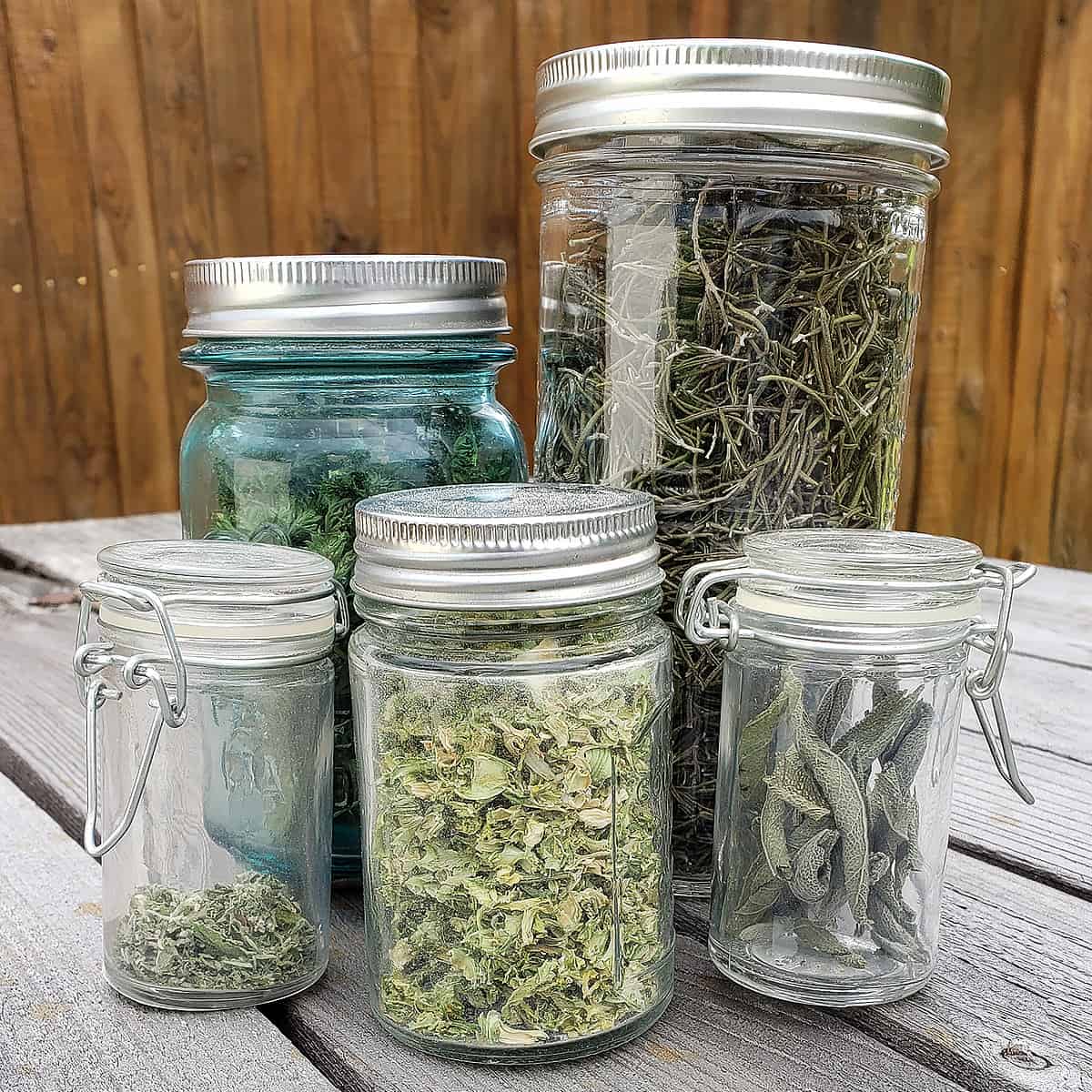

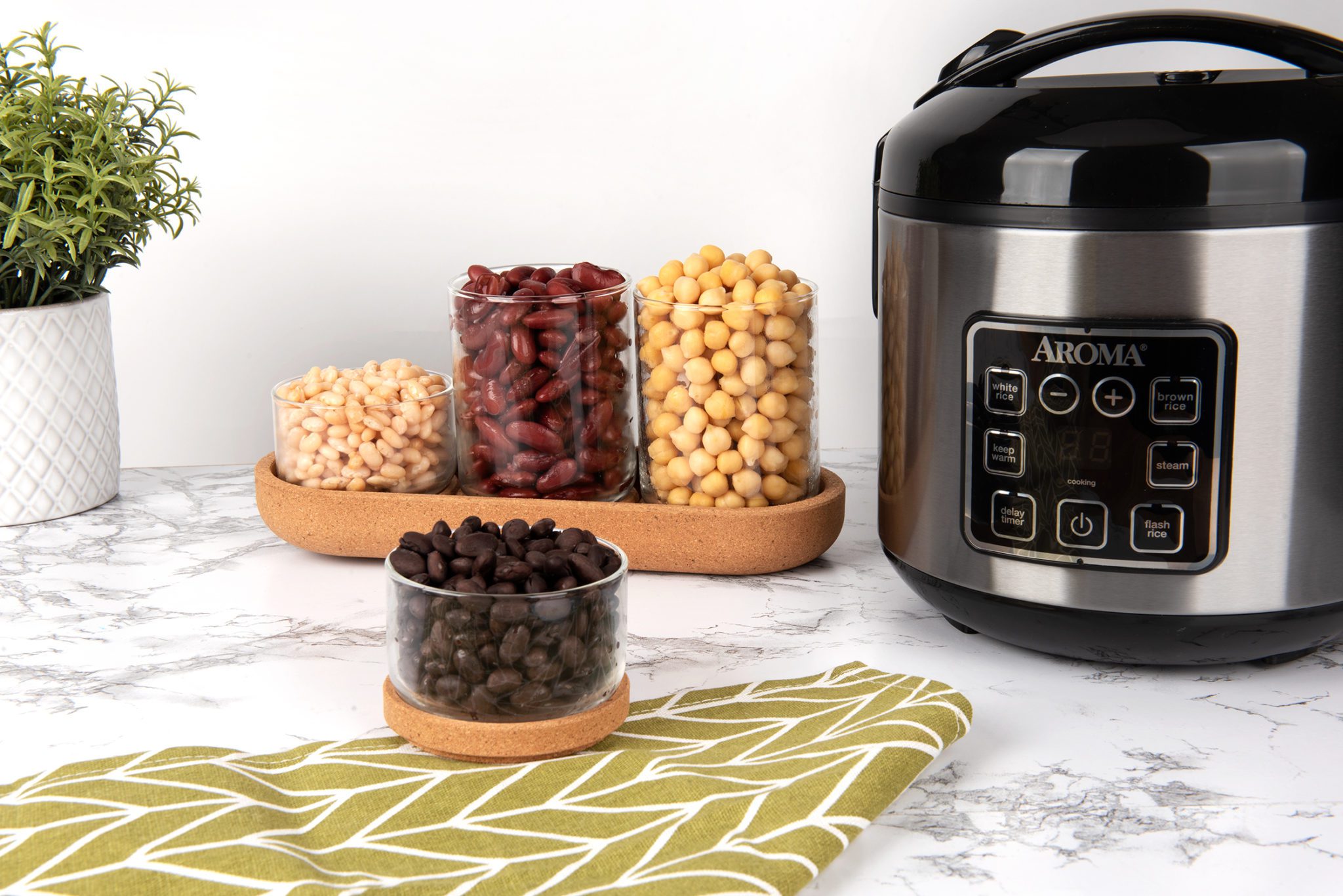
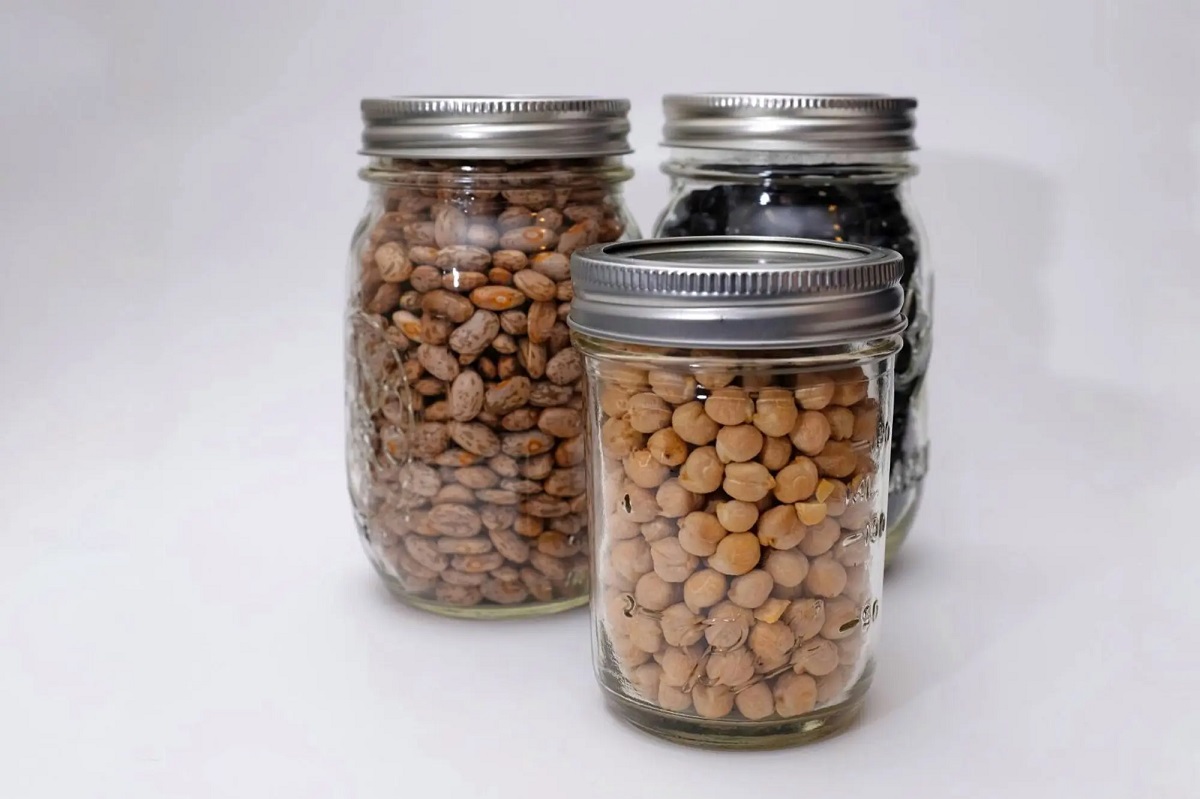
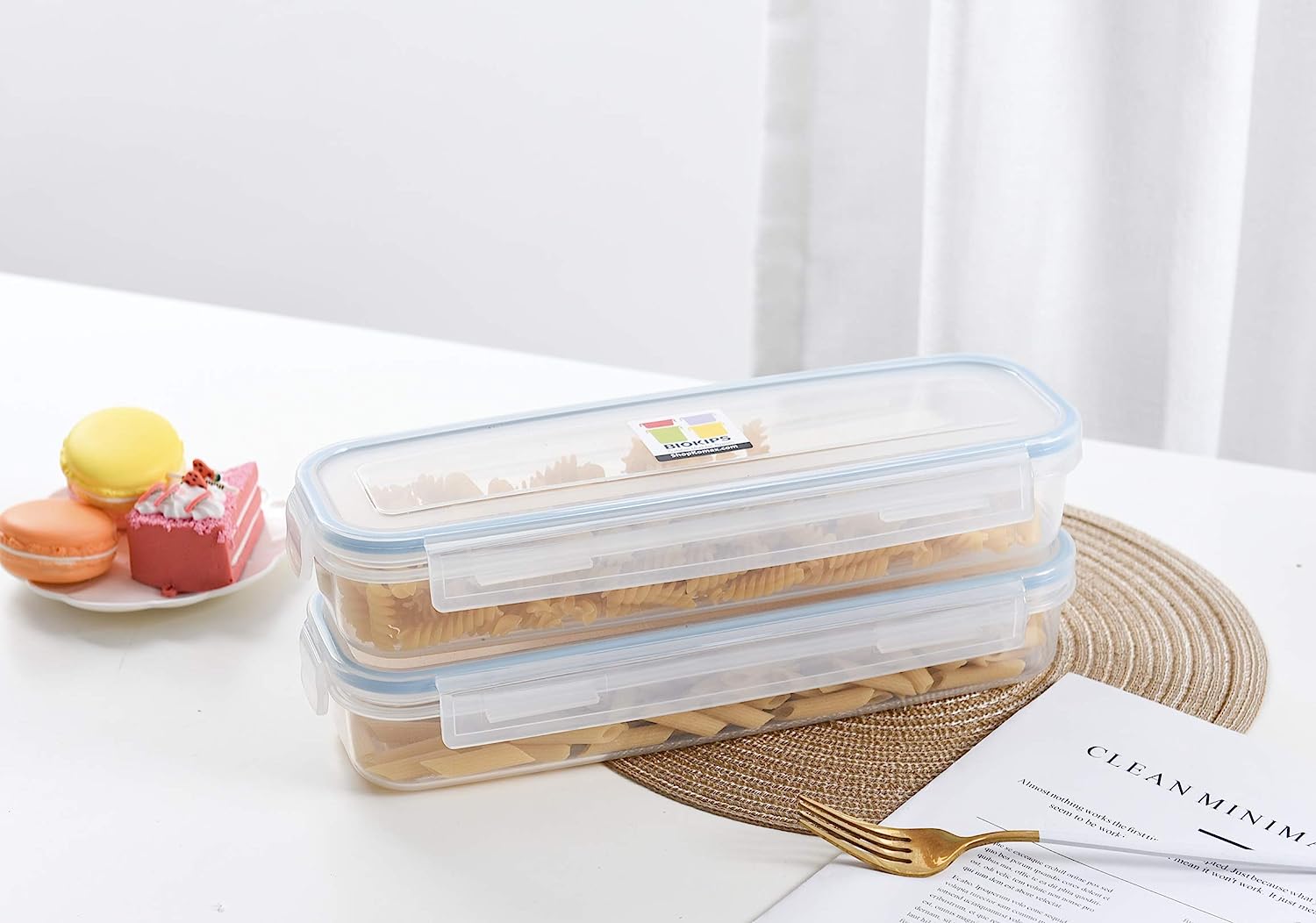









0 thoughts on “How To Store Dried Beans And Rice Long Term”